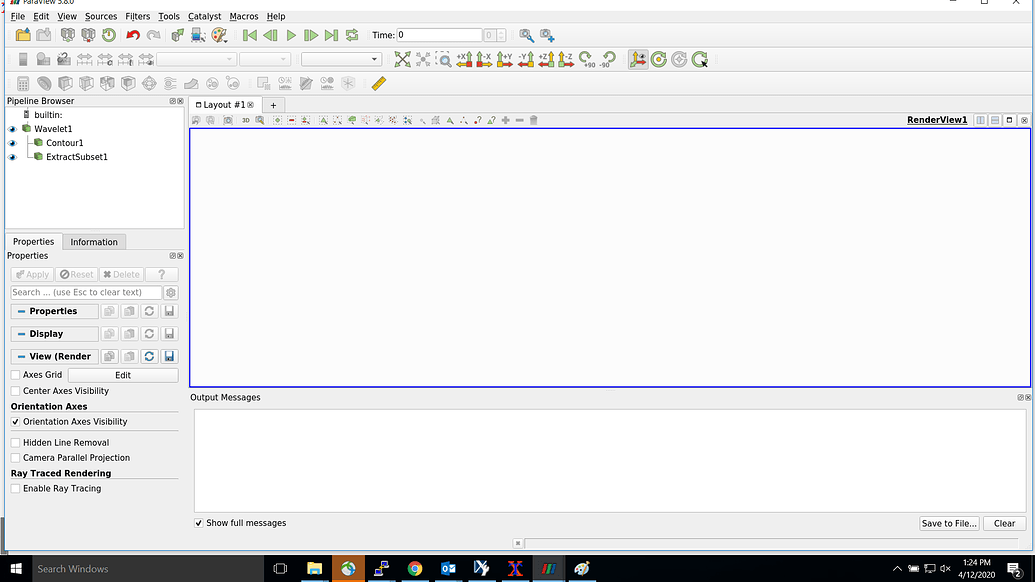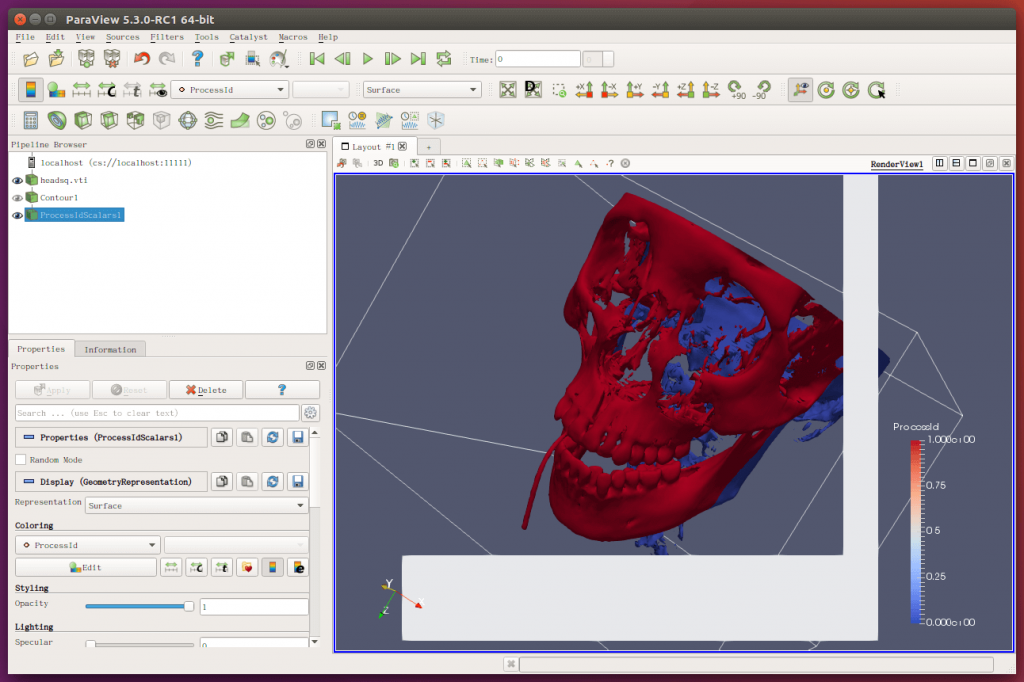
Given the depth and breadth of the universe of hardware that Mesa supports, building Mesa for use on systems with graphics hardware is beyond the scope of this article. If you find that this is the case then you'll likely want to build Mesa from source. Unfortunately, some OpenGL features may be disabled by your distro's package maintainers to avoid patent or other licensing restrictions. Most distros also provide packages for Mesa's software based renderers as well.
#Paraview mpi install#
On Linux systems the easiest way to install Mesa is through your distro's package manager. If you're running a Linux OS with X11 and graphics hardware and have not installed any OpenGL libraries you're probably already using Mesa! Note that the windowing system, in this case X11, is required for on-screen interactive rendering. Please consult distribution and/or vendor specific documentation.
#Paraview mpi drivers#
The details of installing vendor provided drivers in beyond the scope of this document. Many Linux distributions now provide thridparty closed source drivers through specialized package repositories. Vendor provided OpenGL drivers are typically much faster of a much higher quality than Mesa's which can be quite buggy. To get the best performance from your graphics card you'll need to install the vendor provided driver. If you have NVIDIA or AMD graphics hardware Mesa is not your best option. Mesa for your GPUīefore getting into details of Mesa graphics hardware drivers, a disclaimer. If you're running a Linux OS on a system without graphics hardware then this page is for you. Mesa also provides several software based renderers for use on systems without graphics hardware. Mesa is an open source OpenGL implementation that supports a wide range of graphics hardware each with it's own back-end called a renderer. On Linux the default OpenGL drivers are typically provided by Mesa.

#Paraview mpi mac osx#
On Apple Mac OSX just use the default OS provided drivers. On Windows download and install the latest drivers for your system's graphics hardware. If you're running a Windows or Mac OSX operating system, this page is not for you. Most operating systems provide a default OpenGL library. ParaView and VTK make use of OpenGL for rendering. 5.2 Can ParaView be built with X11/GPU accelerated OpenGL and OSMesa in the same build?.5.1 MPI-Parallel rendering with OSMesa Gallium llvmpipe state-tracker.5 Configuring ParaView for use with OSMesa.

4 A comparison of OSMesa Gallium llvmpipe, OSMesa classic and, GPU Accelerated Rendering Performance.3.2 Installing Mesa llvmpipe and swr drivers.Each render server receives geometry from data servers in order to render a portion of the screen. There is a restriction that the render server cannot use more processes than the data server. The render server, too, can run in parallel under MPI if it is configured to do so. Each MPI task is told which partition, or piece of the data, it should It loads and executes the modules you select for your visualization. On Stampede2, the data server runs on the cluster. The data server is a set of processes that communicate with MPI. It has three main logical components, a client server, responsible for the user interface, a data server, to read and process data sets to create final geometric models, and a render server, which renders that final geometry.

It starts as many different processes, possibly on different machines. The ParaView application can run on a whole cluster at the same time.


 0 kommentar(er)
0 kommentar(er)
